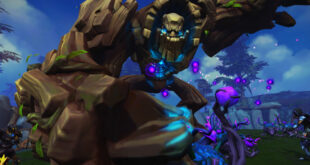Homefront is dead; long live Homefront.
The 2011 shooter came to market with lofty aspirations, positioned from the off as THQ’s attempt to steal a slice of the market dominated by Battlefield and Call of Duty.
It tried to present a more grounded narrative, centred on resistance fighters in a North Korea-occupied America, penned by Dirty Harry and Apocalypse Now screenwriter John Milius.
It also tried to capitalise on the growing interest in multiplayer modes, introducing a unique points system that offered something different from the myriad online shooters in the market at the time.
Bloated with ambition, Homefront launched to lukewarm reviews that praised its multiplayer innovations and atmosphere but lambasted its short campaign and unoriginal gameplay.
The title sold over a million copies, but the reaction from critics caused THQ’s stock to plummet 20 per cent in the 24 hours after release. Developer Kaos was shuttered three months later.
After THQ’s closure in 2012, Crytek – which was in the midst of creating a sequel to the game – acquired the Homefront IP itself, before selling it to Koch Media and newly-founded developer Dambuster Studios (formed by the original Homefront 2 team) last year.
"Forget anything you remember about the first Homefront."
CJ Kershner, Dambuster Studios
Everything is new for Homefront: The Revolution.”
It’s the first thing senior narrative designer CJ Kershner says about next year’s sequel to the ill-fated shooter.
It’s a new team, new publisher, new style of gameplay, new backstory…” he continues.
We’ve gone back to the core concept of Homefront – a fallen occupied America with a North Korean military presence and civilian resistance movement – and expanded it out by 360 degrees.
Dambuster is making its own unique mark on the name of Homefront, so anything that you remember or know about the first game: forget it now. It’s not a continuation of that story or that style of gameplay. There’s a reason we don’t call it Homefront 2.”
Kershner, who also wrote for the original game, is clearly keen to make this follow-up its own distinct creation. Yet, The Revolution retains the Homefront moniker, so comparisons will undoubtedly be drawn – so why keep the name?
There’s power in that core premise of being a guerrilla fighter and fighting in your own neighbourhoods against a technologically- and numerically-superior military force,” answers Kershner.
The premise is strong and the execution on the first game leveraged the story and the idea, but not the actual mechanics of what that would involve.”
The Revolution brings the war-torn America of the original Homefront to an open world that players can explore as they please.
As well as the core story missions, there are city neighbourhoods to release from the grip of the invading North Korean army, plus dynamic events that occur at random in the environment.
By taking it open-world and setting it in Philadelphia, we can bring that guerrilla style of both the shock and awe to the game,” he says.
Players will experience chaotic, unscripted gun battles in the streets, plus the hearts and minds campaign of moving among civilians, sabotaging the infrastructure and encouraging them to make a stand against the occupation themselves.”
There’s perhaps a reason to worry that Homefront: The Revolution will struggle to attract an audience; after all, players were hardly clamouring for a new entry in a long-forgotten series consisting of one mildly-received title – even if the first title did sell well.
If Homefront’s own uneasy legacy wasn’t enough of a challenge, one of the trials of 2011 remains the same today: the saturated shooter genre.
The five years Homefront has spent reinventing itself, games such as Call of Duty, Battlefield and Halo have spent refining their already proven formulas.
It’s a tough market to break into once – let alone twice. Of course, Homefront’s transformation into an open-world title means it will also butt heads with Far Cry, The Division and Mirror’s Edge.
As an open-world and action shooter game, there’s a lot of common DNA to draw from,” Kershner admits.
We have much of that, but we’ve also tried to focus on the elements that will make Homefront unique from other open-world experiences.
Unlike other shooters, you have 360 degrees of movement. Plus, you can go up and down. We try to get the player to think about how they can use the environment to their advantage. Also, there’s not a lot of running around in the open – we’re targeting a different kind of experience. In our case, running around is the best way to get killed. It’s about knowing when to attack but also knowing when to retreat.
One of the other things that makes Homefront: The Revolution markedly different from other open-world games is that the city is divided up into distinctive zones. The red ones are more focused on guerrilla combat. But in the yellow zones, you see how civilians have been living under the occupation area. You can’t walk around with a gun, so you have to figure out how to navigate a crowded street without being seen by the police. The green zones are the seat of the North Korean administration. They’re the landmarks of Philadelphia, like Independence Hall, and they’re very heavily controlled from a security standpoint. Those are where we have our large set-piece missions: spectacular assaults on government positions and things like that.”
"We have a lot of room to tell a lot of different stories in the world of Homefront."
CJ Kershner, Dambuster Studios
While many things have changed about the new Homefront, its ambition appears to be intact.
Kershner scatters references to critically-acclaimed titles throughout our interview, from Dark Souls and Red Dead Redemption to Far Cry and Shadow of Mordor.
It will be a hard fight to distance the shooter sequel from its rocky past, but Kershner seems confiden

 MCV/DEVELOP News, events, research and jobs from the games industry
MCV/DEVELOP News, events, research and jobs from the games industry



